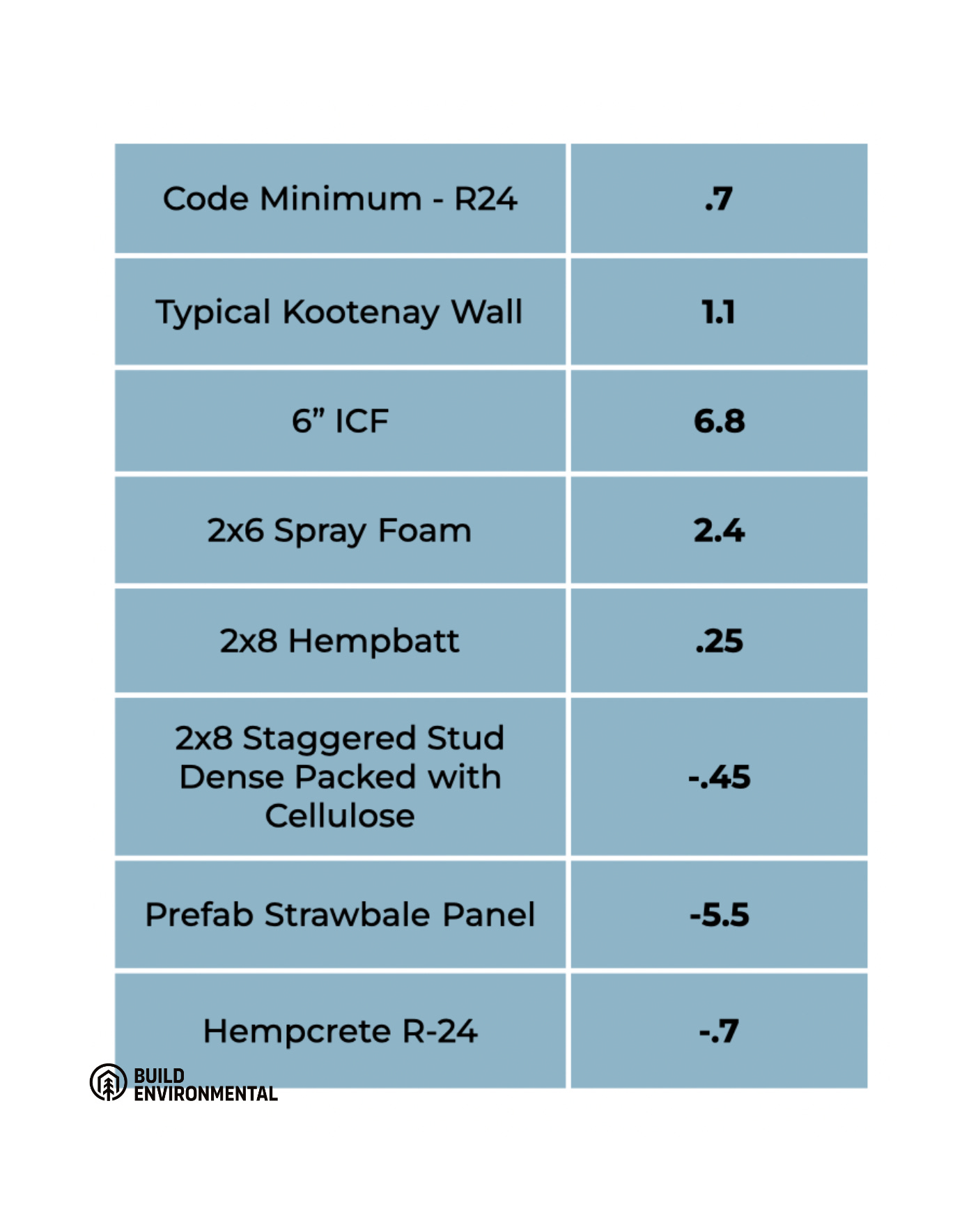Hello,
I’m super excited for this one!
Today we will compare different wall assemblies and their associated embodied carbon.
I've also included a calculation tool to help you make your own embodied carbon calculations.
Let's break down these 5 commonly used wall assemblies and their associated embodied carbon. I calculated these over 100 square feet of wall area to get a better representation of amounts.
As you can see all of these assemblies have some level of embodied carbon (some more than others)
These embodied carbon calculations account for upfront emissions; harvesting, transporting and the manufacturing of materials only.
OK, now here's the important stuff...
Below are three great carbon sequestering wall assemblies. These materials actually draw carbon out of the atmosphere and trap them in walls for the life span of that building.
These assemblies make up for unavoidable high embodied carbon building materials like concrete, steel, foams, windows and roofing.
The conscious way forward is to be using as many carbon sequestering materials as possible.
Annnd…
As promised, here is a calculation tool to help calculate the embodied carbon associated with your project. Find your wall assembly in the following chart and multiply by the wall area of project. (don't forget to subtract window and door area)
Using the calculator tool, let's put this all into perspective and demonstrate why this is so important.
Lets take the average newly constructed Canadian home (approximately 2000sqft) choose a wall assembly, then multiply by the wall area. In this case, 1200sqft. (assuming 9 foot ceilings and roughly 25-30% window to wall ratio)
We can find the following results:
Now, let's consider the compounding effects. The larger the square footage of home the more emissions generated. Or on the other hand, if we use a carbon sequestering wall, more emissions are taken form the atmosphere and stored within the building!
Remember this is just walls, one small piece of the all important embodied carbon puzzle.
Maintaining performance, high levels of energy efficiency and cost considerations are obviously very important as well.
I’m looking forward to getting further into those topics as we go along.
Hopefully this is helpful and I've left you with a few golden nuggets of information.
Please reach out if you have questions or if there is anything you would like to add.
I'd love to hear if there are any specific topics you would like us to cover in upcoming mail-outs.
Until the next one,
Mike






